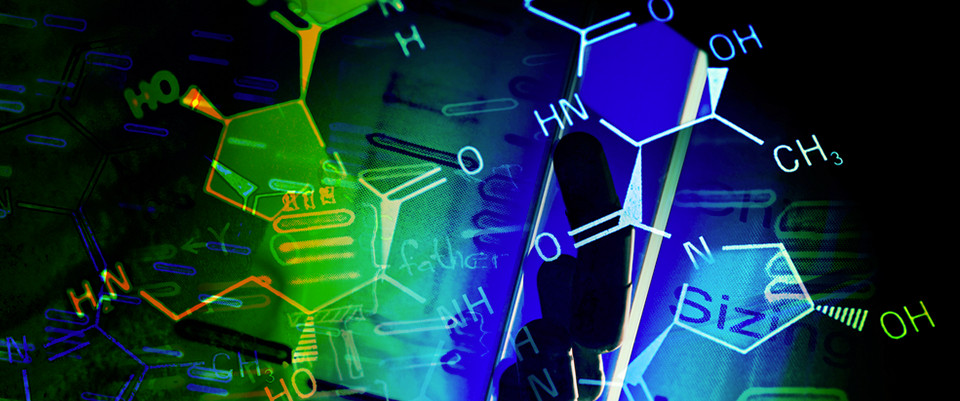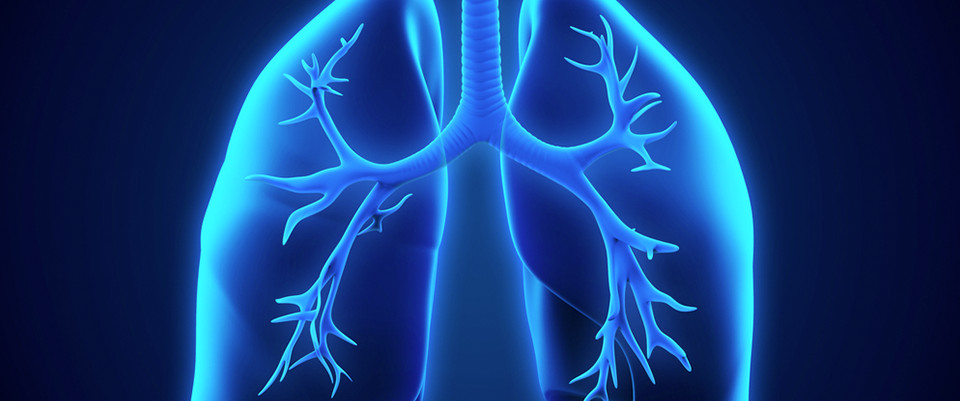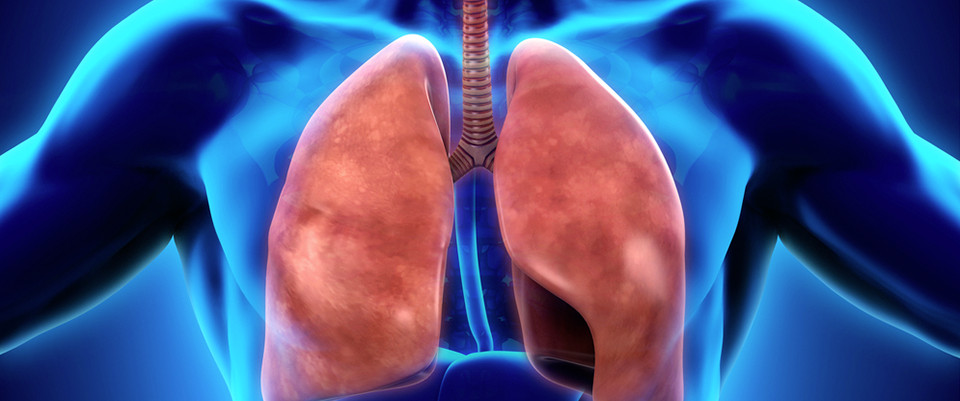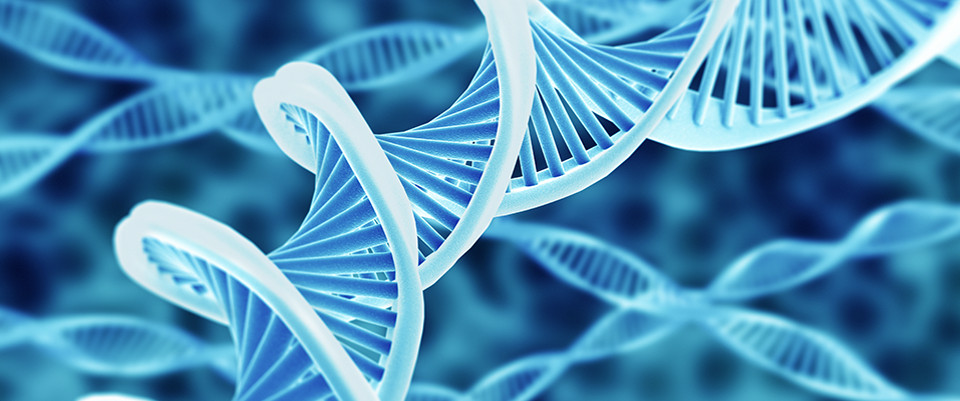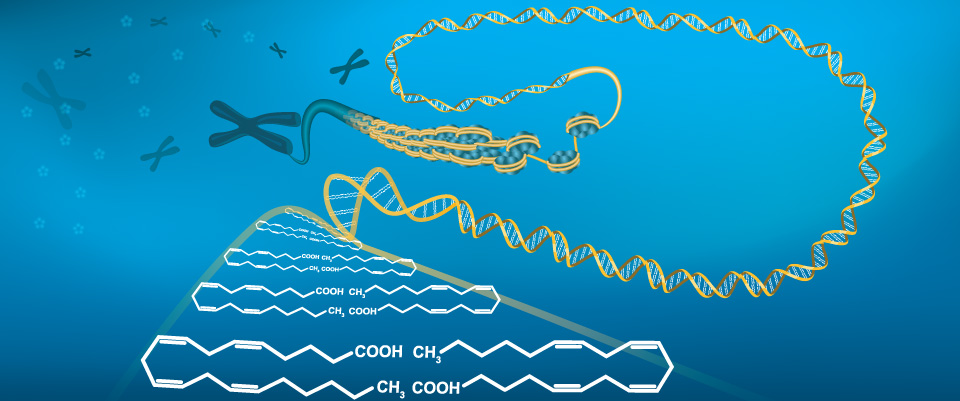PubMed
[Metabolic profiling for characteristics of Trichoderma from buried soils].
Related Articles
[Metabolic profiling for characteristics of Trichoderma from buried soils].
Tsitologiia. 2014;56(6):445-9
Authors: Tukhbatova RI, Morozova IuA, Alimova FK
Abstract
Previously, 135 strains of Trichoderma isolated from buried soils of Tatarstan have been identified as T. asperellum, T. viride, T. atroviride, T. harzianum, T. hamatum, T. citrinoviride and T. longibrachiatum. At this stage, the biochemical analysis of the strains was carried out using the Biolog system, which being a simple screening test enables rapid preparation of strains based on 95 substrates. We have revealed that each species has only a specific substrate utilisation profile. Biochemical analysis provides a large amount of information that can then be used for optimization of biotechnological processes, in particular, the selection of effective nutrient media.
PMID: 25696984 [PubMed - indexed for MEDLINE]
metabolomics; +16 new citations
16 new pubmed citations were retrieved for your search.
Click on the search hyperlink below to display the complete search results:
metabolomics
These pubmed results were generated on 2015/04/17PubMed comprises more than 24 million citations for biomedical literature from MEDLINE, life science journals, and online books.
Citations may include links to full-text content from PubMed Central and publisher web sites.
Systems Biology Analysis Merging Phenotype, Metabolomic and Genomic Data Identifies Non-SMC Condensin I Complex, Subunit G (NCAPG) and Cellular Maintenance Processes as Major Contributors to Genetic Variability in Bovine Feed Efficiency.
Systems Biology Analysis Merging Phenotype, Metabolomic and Genomic Data Identifies Non-SMC Condensin I Complex, Subunit G (NCAPG) and Cellular Maintenance Processes as Major Contributors to Genetic Variability in Bovine Feed Efficiency.
PLoS One. 2015;10(4):e0124574
Authors: Widmann P, Reverter A, Weikard R, Suhre K, Hammon HM, Albrecht E, Kuehn C
Abstract
Feed efficiency is a paramount factor for livestock economy. Previous studies had indicated a substantial heritability of several feed efficiency traits. In our study, we investigated the genetic background of residual feed intake, a commonly used parameter of feed efficiency, in a cattle resource population generated from crossing dairy and beef cattle. Starting from a whole genome association analysis, we subsequently performed combined phenotype-metabolome-genome analysis taking a systems biology approach by inferring gene networks based on partial correlation and information theory approaches. Our data about biological processes enriched with genes from the feed efficiency network suggest that genetic variation in feed efficiency is driven by genetic modulation of basic processes relevant to general cellular functions. When looking at the predicted upstream regulators from the feed efficiency network, the Tumor Protein P53 (TP53) and Transforming Growth Factor beta 1 (TGFB1) genes stood out regarding significance of overlap and number of target molecules in the data set. These results further support the hypothesis that TP53 is a major upstream regulator for genetic variation of feed efficiency. Furthermore, our data revealed a significant effect of both, the Non-SMC Condensin I Complex, Subunit G (NCAPG) I442M (rs109570900) and the Growth /differentiation factor 8 (GDF8) Q204X (rs110344317) loci, on residual feed intake and feed conversion. For both loci, the growth promoting allele at the onset of puberty was associated with a negative, but favorable effect on residual feed intake. The elevated energy demand for increased growth triggered by the NCAPG 442M allele is obviously not fully compensated for by an increased efficiency in converting feed into body tissue. As a consequence, the individuals carrying the NCAPG 442M allele had an additional demand for energy uptake that is reflected by the association of the allele with increased daily energy intake as observed in our study.
PMID: 25875852 [PubMed - as supplied by publisher]
A Four-Compartment Metabolomics Analysis of the Liver, Muscle, Serum, and Urine Response to Polytrauma with Hemorrhagic Shock following Carbohydrate Prefeed.
A Four-Compartment Metabolomics Analysis of the Liver, Muscle, Serum, and Urine Response to Polytrauma with Hemorrhagic Shock following Carbohydrate Prefeed.
PLoS One. 2015;10(4):e0124467
Authors: Witowski N, Lusczek E, Determan C, Lexcen D, Mulier K, Ostrowski B, Beilman G
Abstract
OBJECTIVE: Hemorrhagic shock accompanied by injury represents a major physiologic stress. Fasted animals are often used to study hemorrhagic shock (with injury). A fasted state is not guaranteed in the general human population. The objective of this study was to determine if fed animals would exhibit a different metabolic profile in response to hemorrhagic shock with trauma when compared to fasted animals.
METHODS: Proton (1H) NMR spectroscopy was used to determine concentrations of metabolites from four different compartments (liver, muscle, serum, urine) taken at defined time points throughout shock/injury and resuscitation. PLS-DA was performed and VIP lists established for baseline, shock and resuscitation (10 metabolites for each compartment at each time interval) on metabolomics data from surviving animals.
RESULTS: Fed status prior to the occurrence of hemorrhagic shock with injury alters the metabolic course of this trauma and potentially affects mortality. The death rate for CPF animals is higher than FS animals (47 vs 28%). The majority of deaths occur post-resuscitation suggesting reperfusion injury. The metabolomics response to shock reflects priorities evident at baseline. FS animals raise the baseline degree of proteolysis to provide additional amino acids for energy production while CPF animals rely on both glucose and, to a lesser extent, amino acids. During early resuscitation levels of metabolites associated with energy production drop, suggesting diminished demand.
CONCLUSIONS: Feeding status prior to the occurrence of hemorrhagic shock with injury alters the metabolic course of this trauma and potentially affects mortality. The response to shock reflects metabolic priorities at baseline.
PMID: 25875111 [PubMed - as supplied by publisher]
Ambient Mass Spectrometry Imaging Metabolomics Method Provides Novel Insights into Action Mechanism of Drug Candidate.
Ambient Mass Spectrometry Imaging Metabolomics Method Provides Novel Insights into Action Mechanism of Drug Candidate.
Anal Chem. 2015 Apr 15;
Authors: He J, Luo Z, Huang L, He J, Chen Y, Rong X, Jia S, Tang F, Wang X, Zhang R, Zhang J, Shi JG, Abliz Z
Abstract
Elucidation of mechanism of action for drug candidates is fundamental to drug development, and is strongly facilitated by metabolomics. Herein, we developed an imaging metabolomics method based on air flow assisted desorption electrospray ionization mass spectrometry imaging (AFADESI-MSI) under ambient condition. This method was sub-sequently applied to simultaneously profile a novel anti-insomnia drug candidate, N6-(4-hydroxybenzyl)-adenosine (NHBA), and various endogenous metabolites in rat whole-body tissue sections after administration of NHBA. The principle component analysis (PCA) represented by an intuitive color-coding scheme based on hyperspectral imaging revealed in situ molecular profiling alterations in response to stimulation of NHBA, which are in a very low intensity and hidden in massive interferential peaks. We found that the abundance of six endogenous metabolites changed after drug administration. The spatiotemporal distribution indicated that five altered molecules, including neurotransmitter gamma-aminobutyric acid, neurotransmitter precursors choline and glycerophosphocholine, energy metabolism-related molecules adenosine (an endogenous sleep factor) and creatine, are closely associated with insomnia or other neurological disorders. These findings not only provide insights into deeply understanding on the mechanism of action of NHBA, but also demonstrate that the AFADESI-MSI-based imaging metabolomics is a powerful technique to investigate the molecular mechanism of drug action, especially for drug candidates with multi-target or undefined target in the preclinical study stage.
PMID: 25874739 [PubMed - as supplied by publisher]
Metaproteomics of complex microbial communities in biogas plants.
Metaproteomics of complex microbial communities in biogas plants.
Microb Biotechnol. 2015 Apr 15;
Authors: Heyer R, Kohrs F, Reichl U, Benndorf D
Abstract
Production of biogas from agricultural biomass or organic wastes is an important source of renewable energy. Although thousands of biogas plants (BGPs) are operating in Germany, there is still a significant potential to improve yields, e.g. from fibrous substrates. In addition, process stability should be optimized. Besides evaluating technical measures, improving our understanding of microbial communities involved into the biogas process is considered as key issue to achieve both goals. Microscopic and genetic approaches to analyse community composition provide valuable experimental data, but fail to detect presence of enzymes and overall metabolic activity of microbial communities. Therefore, metaproteomics can significantly contribute to elucidate critical steps in the conversion of biomass to methane as it delivers combined functional and phylogenetic data. Although metaproteomics analyses are challenged by sample impurities, sample complexity and redundant protein identification, and are still limited by the availability of genome sequences, recent studies have shown promising results. In the following, the workflow and potential pitfalls for metaproteomics of samples from full-scale BGP are discussed. In addition, the value of metaproteomics to contribute to the further advancement of microbial ecology is evaluated. Finally, synergistic effects expected when metaproteomics is combined with advanced imaging techniques, metagenomics, metatranscriptomics and metabolomics are addressed.
PMID: 25874383 [PubMed - as supplied by publisher]
Metabolomic profiling in tomato reveals diel compositional changes in fruit affected by source-sink relationships.
Metabolomic profiling in tomato reveals diel compositional changes in fruit affected by source-sink relationships.
J Exp Bot. 2015 Apr 11;
Authors: Bénard C, Bernillon S, Biais B, Osorio S, Maucourt M, Ballias P, Deborde C, Colombié S, Cabasson C, Jacob D, Vercambre G, Gautier H, Rolin D, Génard M, Fernie AR, Gibon Y, Moing A
Abstract
A detailed study of the diurnal compositional changes was performed in tomato (Solanum lycopersicum cv. Moneymaker) leaves and fruits. Plants were cultivated in a commercial greenhouse under two growth conditions: control and shaded. Expanding fruits and the closest mature leaves were harvested during two different day/night cycles (cloudy or sunny day). High-throughput robotized biochemical phenotyping of major compounds, as well as proton nuclear magnetic resonance and mass spectrometry metabolomic profiling, were used to measure the contents of about 70 metabolites in the leaves and 60 metabolites in the fruits, in parallel with ecophysiological measurements. Metabolite data were processed using multivariate, univariate, or clustering analyses and correlation networks. The shaded carbon-limited plants adjusted their leaf area, decreased their sink carbon demand and showed subtle compositional modifications. For source leaves, several metabolites varied along a diel cycle, including those directly linked to photosynthesis and photorespiration. These metabolites peaked at midday in both conditions and diel cycles as expected. However, transitory carbon storage was limited in tomato leaves. In fruits, fewer metabolites showed diel fluctuations, which were also of lower amplitude. Several organic acids were among the fluctuating metabolites. Diel patterns observed in leaves and especially in fruits differed between the cloudy and sunny days, and between the two conditions. Relationships between compositional changes in leaves and fruits are in agreement with the fact that several metabolic processes of the fruit appeared linked to its momentary supply of sucrose.
PMID: 25873655 [PubMed - as supplied by publisher]
Understanding developmental and adaptive cues in pine through metabolite profiling and co-expression network analysis.
Understanding developmental and adaptive cues in pine through metabolite profiling and co-expression network analysis.
J Exp Bot. 2015 Apr 1;
Authors: Cañas RA, Canales J, Muñoz-Hernández C, Granados JM, Ávila C, García-Martín ML, Cánovas FM
Abstract
Conifers include long-lived evergreen trees of great economic and ecological importance, including pines and spruces. During their long lives conifers must respond to seasonal environmental changes, adapt to unpredictable environmental stresses, and co-ordinate their adaptive adjustments with internal developmental programmes. To gain insights into these responses, we examined metabolite and transcriptomic profiles of needles from naturally growing 25-year-old maritime pine (Pinus pinaster L. Aiton) trees over a year. The effect of environmental parameters such as temperature and rain on needle development were studied. Our results show that seasonal changes in the metabolite profiles were mainly affected by the needles' age and acclimation for winter, but changes in transcript profiles were mainly dependent on climatic factors. The relative abundance of most transcripts correlated well with temperature, particularly for genes involved in photosynthesis or winter acclimation. Gene network analysis revealed relationships between 14 co-expressed gene modules and development and adaptation to environmental stimuli. Novel Myb transcription factors were identified as candidate regulators during needle development. Our systems-based analysis provides integrated data of the seasonal regulation of maritime pine growth, opening new perspectives for understanding the complex regulatory mechanisms underlying conifers' adaptive responses. Taken together, our results suggest that the environment regulates the transcriptome for fine tuning of the metabolome during development.
PMID: 25873654 [PubMed - as supplied by publisher]
Assessing the translational landscape of myogenic differentiation by ribosome profiling.
Assessing the translational landscape of myogenic differentiation by ribosome profiling.
Nucleic Acids Res. 2015 Apr 14;
Authors: de Klerk E, Fokkema IF, Thiadens KA, Goeman JJ, Palmblad M, den Dunnen JT, von Lindern M, 't Hoen PA
Abstract
The formation of skeletal muscles is associated with drastic changes in protein requirements known to be safeguarded by tight control of gene transcription and mRNA processing. The contribution of regulation of mRNA translation during myogenesis has not been studied so far. We monitored translation during myogenic differentiation of C2C12 myoblasts, using a simplified protocol for ribosome footprint profiling. Comparison of ribosome footprints to total RNA showed that gene expression is mostly regulated at the transcriptional level. However, a subset of transcripts, enriched for mRNAs encoding for ribosomal proteins, was regulated at the level of translation. Enrichment was also found for specific pathways known to regulate muscle biology. We developed a dedicated pipeline to identify translation initiation sites (TISs) and discovered 5333 unannotated TISs, providing a catalog of upstream and alternative open reading frames used during myogenesis. We identified 298 transcripts with a significant switch in TIS usage during myogenesis, which was not explained by alternative promoter usage, as profiled by DeepCAGE. Also these transcripts were enriched for ribosomal protein genes. This study demonstrates that differential mRNA translation controls protein expression of specific subsets of genes during myogenesis. Experimental protocols, analytical workflows, tools and data are available through public repositories (http://lumc.github.io/ribosome-profiling-analysis-framework/).
PMID: 25873627 [PubMed - as supplied by publisher]
Metabolic signatures of bacterial vaginosis.
Metabolic signatures of bacterial vaginosis.
MBio. 2015;6(2)
Authors: Srinivasan S, Morgan MT, Fiedler TL, Djukovic D, Hoffman NG, Raftery D, Marrazzo JM, Fredricks DN
Abstract
UNLABELLED: Bacterial vaginosis (BV) is characterized by shifts in the vaginal microbiota from Lactobacillus dominant to a microbiota with diverse anaerobic bacteria. Few studies have linked specific metabolites with bacteria found in the human vagina. Here, we report dramatic differences in metabolite compositions and concentrations associated with BV using a global metabolomics approach. We further validated important metabolites using samples from a second cohort of women and a different platform to measure metabolites. In the primary study, we compared metabolite profiles in cervicovaginal lavage fluid from 40 women with BV and 20 women without BV. Vaginal bacterial representation was determined using broad-range PCR with pyrosequencing and concentrations of bacteria by quantitative PCR. We detected 279 named biochemicals; levels of 62% of metabolites were significantly different in women with BV. Unsupervised clustering of metabolites separated women with and without BV. Women with BV have metabolite profiles marked by lower concentrations of amino acids and dipeptides, concomitant with higher levels of amino acid catabolites and polyamines. Higher levels of the signaling eicosanoid 12-hydroxyeicosatetraenoic acid (12-HETE), a biomarker for inflammation, were noted in BV. Lactobacillus crispatus and Lactobacillus jensenii exhibited similar metabolite correlation patterns, which were distinct from correlation patterns exhibited by BV-associated bacteria. Several metabolites were significantly associated with clinical signs and symptoms (Amsel criteria) used to diagnose BV, and no metabolite was associated with all four clinical criteria. BV has strong metabolic signatures across multiple metabolic pathways, and these signatures are associated with the presence and concentrations of particular bacteria.
IMPORTANCE: Bacterial vaginosis (BV) is a common but highly enigmatic condition that is associated with adverse outcomes for women and their neonates. Small molecule metabolites in the vagina may influence host physiology, affect microbial community composition, and impact risk of adverse health outcomes, but few studies have comprehensively studied the metabolomics profile of BV. Here, we used mass spectrometry to link specific metabolites with particular bacteria detected in the human vagina by PCR. BV was associated with strong metabolic signatures across multiple pathways affecting amino acid, carbohydrate, and lipid metabolism, highlighting the profound metabolic changes in BV. These signatures were associated with the presence and concentrations of particular vaginal bacteria, including some bacteria yet to be cultivated, thereby providing clues as to the microbial origin of many metabolites. Insights from this study provide opportunities for developing new diagnostic markers of BV and novel approaches for treatment or prevention of BV.
PMID: 25873373 [PubMed - in process]
Constitutive production of c-di-GMP is associated with mutations in a variant of Pseudomonas aeruginosa with altered membrane composition.
Constitutive production of c-di-GMP is associated with mutations in a variant of Pseudomonas aeruginosa with altered membrane composition.
Sci Signal. 2015;8(372):ra36
Authors: Blanka A, Düvel J, Dötsch A, Klinkert B, Abraham WR, Kaever V, Ritter C, Narberhaus F, Häussler S
Abstract
Most bacteria can form multicellular communities called biofilms on biotic and abiotic surfaces. This multicellular response to surface contact correlates with an increased resistance to various adverse environmental conditions, including those encountered during infections of the human host and exposure to antimicrobial compounds. Biofilm formation occurs when freely swimming (planktonic) cells encounter a surface, which stimulates the chemosensory-like, surface-sensing system Wsp and leads to generation of the intracellular second messenger 3',5'-cyclic-di-guanosine monophosphate (c-di-GMP). We identified adaptive mutations in a clinical small colony variant (SCV) of Pseudomonas aeruginosa and correlated their presence with self-aggregating growth behavior and an enhanced capacity to form biofilms. We present evidence that a point mutation in the 5' untranslated region of the accBC gene cluster, which encodes components of an enzyme responsible for fatty acid biosynthesis, was responsible for a stabilized mRNA structure that resulted in reduced translational efficiency and an increase in the proportion of short-chain fatty acids in the plasma membrane. We propose a model in which these changes in P. aeruginosa serve as a signal for the Wsp system to constitutively produce increased amounts of c-di-GMP and thus play a role in the regulation of adhesion-stimulated bacterial responses.
PMID: 25872871 [PubMed - in process]
Alcoholic liver disease: the gut microbiome and liver cross talk.
Alcoholic liver disease: the gut microbiome and liver cross talk.
Alcohol Clin Exp Res. 2015 May;39(5):763-75
Authors: Hartmann P, Seebauer CT, Schnabl B
Abstract
Alcoholic liver disease (ALD) is a leading cause of morbidity and mortality worldwide. Alcoholic fatty liver disease can progress to steatohepatitis, alcoholic hepatitis, fibrosis, and cirrhosis. Patients with alcohol abuse show quantitative and qualitative changes in the composition of the intestinal microbiome. Furthermore, patients with ALD have increased intestinal permeability and elevated systemic levels of gut-derived microbial products. Maintaining eubiosis, stabilizing the mucosal gut barrier, or preventing cellular responses to microbial products protect from experimental ALD. Therefore, intestinal dysbiosis and pathological bacterial translocation appear fundamental for the pathogenesis of ALD. This review highlights causes for intestinal dysbiosis and pathological bacterial translocation, their relationship, and consequences for ALD. We also discuss how the liver affects the intestinal microbiota.
PMID: 25872593 [PubMed - in process]
The quantity-effect relationship and physiological mechanisms of different acupuncture manipulations on posterior circulation ischemia with vertigo: study protocol for a randomized controlled trial.
The quantity-effect relationship and physiological mechanisms of different acupuncture manipulations on posterior circulation ischemia with vertigo: study protocol for a randomized controlled trial.
Trials. 2015;16(1):152
Authors: Deng SZ, Zhao XF, Huang LH, He S, Wen Y, Zhang C, Tian G, Wang T, Wu FF, Meng ZH, Shi XM
Abstract
BACKGROUND: Recent experiments have demonstrated that different needling manipulations may induce variable effects via diverse physiological mechanisms. A previous study indicated that needling at Fengchi (GB 20) improved cerebral blood flow in patients with vertigo induced by posterior circulation ischemia (PCI). In this study, we aim to explore the quantity-effect relationship and the physiological mechanisms underlying different acupuncture manipulations in PCI patients with vertigo.
METHODS/DESIGN: We propose a pragmatic randomized and controlled trial. All participants, outcome assessors, and statisticians will be blinded. A total of 144 eligible participants will be randomized into one of four treatment groups receiving acupuncture at Fengchi (GB 20) with different one-minute manipulation parameters. Group 1 will receive twirling at a frequency of 60 times per minute toward the contralateral outer canthus at a depth of 0.5 to 0.8 cun. Group 2 will receive twirling at a frequency of 60 times per minute toward the Adam's apple at a depth of 0.5 to 0.8 cun. Group 3 will receive twirling at a frequency of 120 times per minute toward the contralateral outer canthus at a depth of 0.5 to 0.8 cun. Group 4 will receive twirling at a frequency of120 times per minute toward the Adam's apple at a depth of 0.5 to 0.8 cun. Additional points will be added based on individualized pattern diagnoses. The participants will receive 14 acupuncture sessions over 3 to 4 weeks. The subjects will be assessed at two time points: baseline and post-treatment. The primary outcome measurements will include subjective measurements (Vertebrobasilar System Ischemic Neurological Impairment Scale, UCLA Dizziness Questionnaire, Activities of Daily Living Scale, and Psychological and Social Adaptation Scale) and objective measurements (Transcranial Doppler, carotid ultrasonography and changes in cerebral oxygenation) to reduce bias arising from the placebo effect. We will use metabolomics to investigate the mechanisms underlying the different manipulation parameters.
DISCUSSION: This trial aims to explore the quantity-effect relationship between different acupuncture manipulations and their clinical effects. The results from this study may help explain the contradictory results found in acupuncture studies that practice different manipulations.
TRIAL REGISTRATION: Chinese Clinical Trial Registry: ChiCTR-RTRCC-12002675 (registered on 14 November 2012).
PMID: 25872507 [PubMed - in process]
A gut microbial metabolite of linoleic acid, 10-hydroxy-cis-12-octadecenoic acid, ameliorates intestinal epithelial barrier impairment partially via GPR40-MEK-ERK pathway.
Related Articles
A gut microbial metabolite of linoleic acid, 10-hydroxy-cis-12-octadecenoic acid, ameliorates intestinal epithelial barrier impairment partially via GPR40-MEK-ERK pathway.
J Biol Chem. 2015 Jan 30;290(5):2902-18
Authors: Miyamoto J, Mizukure T, Park SB, Kishino S, Kimura I, Hirano K, Bergamo P, Rossi M, Suzuki T, Arita M, Ogawa J, Tanabe S
Abstract
Gut microbial metabolites of polyunsaturated fatty acids have attracted much attention because of their various physiological properties. Dysfunction of tight junction (TJ) in the intestine contributes to the pathogenesis of many disorders such as inflammatory bowel disease. We evaluated the effects of five novel gut microbial metabolites on tumor necrosis factor (TNF)-α-induced barrier impairment in Caco-2 cells and dextran sulfate sodium-induced colitis in mice. 10-Hydroxy-cis-12-octadecenoic acid (HYA), a gut microbial metabolite of linoleic acid, suppressed TNF-α and dextran sulfate sodium-induced changes in the expression of TJ-related molecules, occludin, zonula occludens-1, and myosin light chain kinase. HYA also suppressed the expression of TNF receptor 2 (TNFR2) mRNA and protein expression in Caco-2 cells and colonic tissue. In addition, HYA suppressed the protein expression of TNFR2 in murine intestinal epithelial cells. Furthermore, HYA significantly up-regulated G protein-coupled receptor (GPR) 40 expression in Caco-2 cells. It also induced [Ca(2+)]i responses in HEK293 cells expressing human GPR40 with higher sensitivity than linoleic acid, its metabolic precursor. The barrier-recovering effects of HYA were abrogated by a GPR40 antagonist and MEK inhibitor in Caco-2 cells. Conversely, 10-hydroxyoctadacanoic acid, which is a gut microbial metabolite of oleic acid and lacks a carbon-carbon double bond at Δ12 position, did not show these TJ-restoring activities and down-regulated GPR40 expression. Therefore, HYA modulates TNFR2 expression, at least partially, via the GPR40-MEK-ERK pathway and may be useful in the treatment of TJ-related disorders such as inflammatory bowel disease.
PMID: 25505251 [PubMed - indexed for MEDLINE]
Identification, characterization, and structure analysis of the cyclic di-AMP-binding PII-like signal transduction protein DarA.
Related Articles
Identification, characterization, and structure analysis of the cyclic di-AMP-binding PII-like signal transduction protein DarA.
J Biol Chem. 2015 Jan 30;290(5):3069-80
Authors: Gundlach J, Dickmanns A, Schröder-Tittmann K, Neumann P, Kaesler J, Kampf J, Herzberg C, Hammer E, Schwede F, Kaever V, Tittmann K, Stülke J, Ficner R
Abstract
The cyclic dimeric AMP nucleotide c-di-AMP is an essential second messenger in Bacillus subtilis. We have identified the protein DarA as one of the prominent c-di-AMP receptors in B. subtilis. Crystal structure analysis shows that DarA is highly homologous to PII signal transducer proteins. In contrast to PII proteins, the functionally important B- and T-loops are swapped with respect to their size. DarA is a homotrimer that binds three molecules of c-di-AMP, each in a pocket located between two subunits. We demonstrate that DarA is capable to bind c-di-AMP and with lower affinity cyclic GMP-AMP (3'3'-cGAMP) but not c-di-GMP or 2'3'-cGAMP. Consistently the crystal structure shows that within the ligand-binding pocket only one adenine is highly specifically recognized, whereas the pocket for the other adenine appears to be promiscuous. Comparison with a homologous ligand-free DarA structure reveals that c-di-AMP binding is accompanied by conformational changes of both the fold and the position of the B-loop in DarA.
PMID: 25433025 [PubMed - indexed for MEDLINE]
Ergosterol, an orphan fungal microbe-associated molecular pattern (MAMP).
Related Articles
Ergosterol, an orphan fungal microbe-associated molecular pattern (MAMP).
Mol Plant Pathol. 2014 Sep;15(7):747-61
Authors: Klemptner RL, Sherwood JS, Tugizimana F, Dubery IA, Piater LA
Abstract
Fungal pathogens continue to pose a significant threat to crop production and food supply. The early stages of plant-fungus interactions are mostly mediated by microbe-associated molecular pattern (MAMP) molecules, perceived by plant pattern recognition receptors (PRRs). Currently, the identified fungal MAMP molecules include chitin, chitosan, β-glucans, elicitins and ergosterol. Although the molecular battles between host plants and infecting fungal phytopathogens have been studied extensively, many aspects still need to be investigated to obtain a holistic understanding of the intrinsic mechanisms, which is paramount in combating fungal plant diseases. Here, an overview is given of the most recent findings concerning an 'orphan' fungal MAMP molecule, ergosterol, and we present what is currently known from a synopsis of different genes, proteins and metabolites found to play key roles in induced immune responses in plant-fungus interactions. Clearly, integrative investigations are still needed to provide a comprehensive systems-based understanding of the dynamics associated with molecular mechanisms in plant-ergosterol interactions and associated host responses.
PMID: 24528492 [PubMed - indexed for MEDLINE]
A High-Performance Liquid Chromatography- Tandem Mass Spectrometry- Based Targeted Metabolomics Kidney Dysfunction Marker Panel in Human Urine.
Related Articles
A High-Performance Liquid Chromatography- Tandem Mass Spectrometry- Based Targeted Metabolomics Kidney Dysfunction Marker Panel in Human Urine.
Clin Chim Acta. 2015 Apr 11;
Authors: Klepacki J, Klawitter J, Klawitter J, Thurman J, Christians U
Abstract
BACKGROUND: Previous studies have examined and documented fluctuations in urine metabolites in response to disease processes and drug toxicity affecting glomerular filtration, tubule cell metabolism, reabsorption, oxidative stress, purine degradation, active secretion and kidney amino acylase activity representative of diminished renal function. However, a high-throughput assay that incorporates metabolites that are surrogate markers for such changes into a kidney dysfunction panel has yet to be described.
METHODS: A high-performance liquid chromatography-tandem mass spectrometry (HPLC-MS/MS) assay for the quantification of ten metabolites associated with the Krebs cycle, purine degradation, and oxidative stress in human urine was developed and validated. Normal values were assessed in healthy adult (n=120) and pediatric (n=36) individuals. In addition, 9 pediatric renal transplant recipients patients were evaluated before and after initial dosing of the immunosuppressant tacrolimus in a proof-of-concept study.
RESULTS: The assay met all predefined acceptance criteria. The lower limit of quantification ranged from 0.1 to 1000 μmol/l. Inter-day trueness and imprecisions ranged from 91.4-112.9% and 1.5-12.4%, respectively. The total assay run time was 5.5 minutes. Concentrations of glucose, sorbitol, and trimethylamine oxide (TMAO) were elevated in pediatric renal transplant patients (n=9) prior to transplantation as well as before and immediately after initial dosing of tacrolimus. One month post-transplant urine metabolite patterns matched those of healthy children (n=36).
CONCLUSIONS: The LC-MS/MS assay will provide the basis for further large-scale clinical studies to explore these analytes as molecular markers for the patients with renal insufficiency.
PMID: 25871999 [PubMed - as supplied by publisher]
Metabolomic Signatures for Drug Response Phenotypes-Pharmacometabolomics Enables Precision Medicine.
Related Articles
Metabolomic Signatures for Drug Response Phenotypes-Pharmacometabolomics Enables Precision Medicine.
Clin Pharmacol Ther. 2015 Apr 14;
Authors: Kaddurah-Daouk R, Weinshilboum R, Pharmacometabolomics Research Network
Abstract
The scaling up of data in clinical pharmacology and the merger of systems biology and pharmacology has led to the emergence of a new discipline of Quantitative and Systems Pharmacology (QSP). This new research direction might significantly advance the discovery, development and clinical use of therapeutic drugs. Research communities from computational biology, systems biology and biological engineering-working collaboratively with pharmacologists, geneticists, biochemists and analytical chemists-are creating and modeling large data on drug effects that is transforming our understanding of how these drugs work at a network level. In this review, we highlight developments in a new and rapidly growing field-pharmacometabolomics-in which large biochemical data-capturing effects of genome, gut microbiome and environment exposures is revealing information about metabotypes and treatment outcomes, and creating metabolic signatures as new potential biomarkers. Pharmacometabolomics informs and compliments pharmacogenomics and together they provide building blocks for QSP. This article is protected by copyright. All rights reserved.
PMID: 25871646 [PubMed - as supplied by publisher]
Blood Metabolome Changes Before and After Bariatric Surgery: A (1)H NMR-Based Clinical Investigation.
Related Articles
Blood Metabolome Changes Before and After Bariatric Surgery: A (1)H NMR-Based Clinical Investigation.
OMICS. 2015 Apr 14;
Authors: Lopes TI, Geloneze B, Pareja JC, Calixto AR, Ferreira MM, Marsaioli AJ
Abstract
Excessive body fat and obesity have adverse health effects and result in significant morbidity such as type 2 diabetes mellitus. The health burden of obesity can be reduced with the Roux-en-Y gastric bypass (RYGB) weight-loss bariatric surgery. Little is known on the molecular changes that occur at the metabolome level before and after bariatric surgery, with a view to clinical biomarker development. Hence, we employed a metabolomics approach in 10 obese diabetic patients who underwent bariatric surgery. Metabolomics data were obtained by T2- and diffusion-edited hydrogen nuclear magnetic resonance ((1)H NMR) spectra to monitor the metabolic and lipoprotein profiles, and gas chromatography-mass spectrometry (CG-MS) to access the fatty acid profile before and 12 months after RYGB. Using hierarchical partial least squares discriminant analysis, we found that RYGB induces several key metabolic alterations associated with glucose homeostasis, as well as fatty acid and amino acid metabolism. The levels of lactate (Krebs' intermediate cycle) decreased after RYGB. The leucine, isoleucine, valine, lactate, and glucose levels were higher in the samples before RYGB (p<0.05). Additionally, the levels of very low-density lipoprotein, unsaturated lipids, and N-acetyl-glycoprotein were higher before RYGB. By contrast, levels of the high-density lipoprotein and phosphatidylcholine were higher after bariatric surgery. These results collectively offer important holistic integrative biology data to develop future clinically relevant metabolomics biomarkers related to bariatric surgery in connection with obesity.
PMID: 25871626 [PubMed - as supplied by publisher]
Urinary metabolomics and biomarkers of aristolochic acid nephrotoxicity by UPLC-QTOF/HDMS.
Related Articles
Urinary metabolomics and biomarkers of aristolochic acid nephrotoxicity by UPLC-QTOF/HDMS.
Bioanalysis. 2015 Apr;7(6):685-700
Authors: Zhao YY, Tang DD, Chen H, Mao JR, Bai X, Cheng XH, Xiao XY
Abstract
BACKGROUND: Drug-induced nephrotoxicity was one of the most important health problems, with increasing morbidity and mortality. Urinary metabolomics based on ultra performance liquid chromatography coupled with quadrupole time-of-flight high-definition mass spectrometry was applied to aristolochic acid (AA) nephrotoxicity rats to characterize the excretion pathways of endogenous metabolites.
RESULTS: Compared with the control rats, serum creatinine, serum blood urea nitrogen and urine protein levels were significantly increased in AA nephrotoxicity rats. Metabolomics showed that metabolites including citrate, aconitate, fumarate, glucose, creatinine, p-cresyl sulfate, indoxyl sulfate, hippuric acid, phenylacetylglycine, kynurenic acid, indole-3-carboxylic acid, spermine, uric acid, allantoin, cholic acid and taurine were identified in AA nephrotoxicity rats.
CONCLUSION: The identified metabolites suggested that AA nephrotoxicity rats occurred perturbations in Krebs cycle, gut microflora metabolism, amino acid metabolism, purine metabolism and bile acid biosynthesis.
PMID: 25871586 [PubMed - as supplied by publisher]

